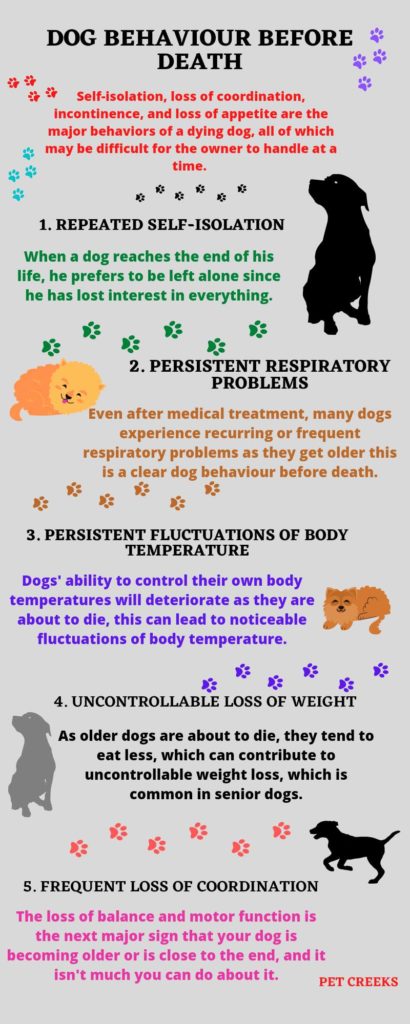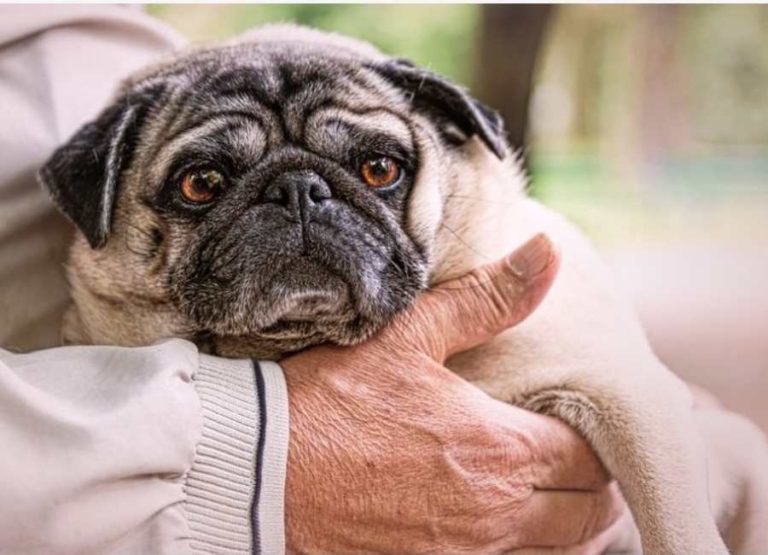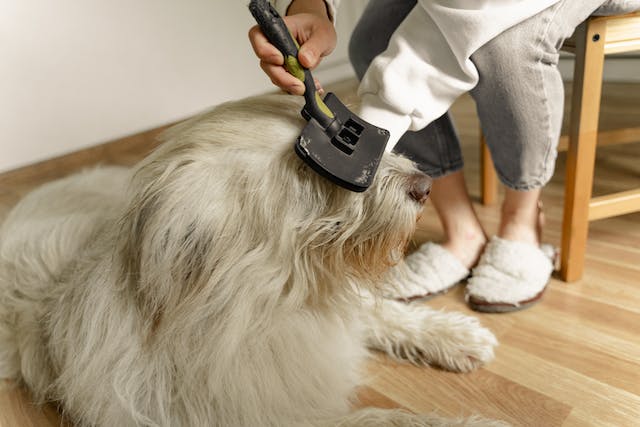11 Common Dog Behaviour Before Death You Should Know

It is always tough and sad to deal with dog behaviour before death, but it is much better to know the signs that a dog is about to die, so as to find ways to give them better dying days.
In this post, we will outline and discuss all the common signs or dog behaviour before death you should know.
I have witnessed two days pass away, and I really understand most of the behaviors they exhibit when they get to the end.
So with my personal experiences and research, I will outline and discuss all the common dog behaviour before death down till the last day. So sit tight and read through.
Dog Behaviour Before Death
Self-isolation, memory loss, loss of coordination, lethargy, incontinence, and loss of appetite are the major behaviors of a dying dog, all of which may be difficult for the owner to handle at a time.

Here is a list of the most common dog behaviour before death you should know:
1. Repeated self-isolation
Repeated self-isolation to a point that you hardly see your dog indicate your pup is no longer comfortable with its environment.
Self-isolation is one of the most common signs of a dying dog; while this may be upsetting for some dog owners, understanding your dog’s need for seclusion is essential.
When a dog reaches the end of his life, he prefers to be left alone since he has lost interest in everything.
Walking away from family members, activities, or sounds to a tranquil location on a regular basis is a clue that your elderly dog is nearing the end of his life.
2. Persistent respiratory problems
Even after medical treatment, many dogs experience recurring or frequent respiratory problems as they get older this is a clear dog behaviour before death.
Their breathing may be uneven, with significant gaps between inhaling and exhaling, which may worsen over time.
These are the most difficult moments because you know they’re in agony and you can’t do anything to assist.
Accepting that you have no control over the circumstances while saying goodbye to your dog during these trying hours is essential. You’re not going to be able to stop it.
3. Persistent loss of swallow reflex
An elderly dog’s diet consists primarily of soft foods and liquids such as bone broth or water.
As a dog approaches death, his ability to swallow deteriorates dramatically, this can lead to loss of swallow reflex, the dog may hold food in his mouth longer than expected.
Hard foods, such as kibble, can be difficult for dogs to chew, and solid foods can cause coughing and choking.
When a dog’s digestive system fails, eating solid food becomes uncomfortable.
Dogs are no longer permitted to walk to the water bowl as they were previously.
4. Persistent fluctuations of body temperature
Dogs’ ability to control their own body temperatures will deteriorate as they are about to die, this can lead to noticeable fluctuations of body temperature.
A dying dog may develop other health problems, leading them to lose body heat, often since they can no longer control their body temperature.
As a result, a dying dog’s body temperature will be lower than usual, which the owner would notice.
Just remember that if you live in a cooler climate, your puppy may become overheated, and if you don’t, your puppy may die or become unwell.
You may also keep your dog warm by using a heated bed or a warm blanket to raise his body temperature.
It’s a warning indicator if your elderly dog’s body temperature continues to decrease after you’ve scheduled an appointment with your veterinarian.
5. Uncontrollable loss of weight
As older dogs are about to die, they tend to eat less, which can contribute to uncontrollable weight loss, which is common in senior dogs.
The majority of dog owners will find it tough to watch or suffer through this, and going through it with your dog will need courage.
If your dog’s weight loss persists after your veterinarian has ruled out all other possibilities, the end is near.
Senior dogs seldom become hungry and skinny simply because of their age.
Degenerative illnesses like chronic renal or hepatic insufficiencies, as well as cancer, can all lead to your dog’s mortality.
6. Presence of loose fur in every sleeping spot
This is something that every dog faces as they near the end of their lives, and it may be tough for some dog owners to deal with because you may need to clean up on a frequent basis.
Dogs shed for a variety of causes, the majority of which may be readily resolved with the assistance of a veterinarian.
However, if your dog continues to shed excessively on every sleeping spot even after receiving therapy from your veterinarian, the end is approaching.
When your elderly dog stands up and you notice a handful of fur from where he got up, you know he’s nearing the end of his life.
Excessive shedding after treatment is a sure indicator that your puppy is dying of old age, and there’s nothing you can do about it at this point.
7. Frequent potty accidents in sleeping spot
Incontinence, or the inability to control urination, is a typical problem in older dogs.
Taking your dog to the vet after a home accident might be beneficial at first, but as time passes, the vet may become less involved in the last few days.
In general, if your dog has incontinence but is otherwise acting normal, such as having energy, playing about, and being cheery, it is not nearing the end of its life.
You and your veterinarian have no options at this point since a dying dog will lie in one posture and will not even move to relieve itself.
They might have diarrhea, which is just another sign that your dog is dying. It’s a sign that your dog’s internal organs aren’t working properly.
During this period, it is vital that you keep them and their bed clean and dry.
8. Frequent loss of coordination
The loss of balance and motor function is the next major sign that your dog is becoming older or is close to the end, and it isn’t much you can do about it.
If your dog stands up and moves about, he or she may seem wobbly or disoriented, which indicates that coordination is failing. They may shake or convulse when laying down.
As much as possible, confine them to a small, peaceful, and comfortable place, and remove anything they could bump into or knock over.
Safeguarding your dog, establishing a secure atmosphere for them, and giving them with whatever support they require are all part of saying goodbye to your dog.
9. Total break down in mobility rate
Your dying dog’s mobility will degrade at a greater pace than usual as he or she approaches the end of life.
As the dog matures, his or her strength may diminish to the point where he or she is unable to stand for as long as previously.
The legs of your dog may become tired, making it difficult for them to climb stairs or cross slick surfaces.
Your dog’s ability to stand and walk about may deteriorate over time, and some may even struggle to lift their heads.
One of the final stages before your dog gives up is a decrease in movement speed. This will be clear, and you should expect to see it.
10. Lack of appetite for any type of food
As a dog ages, its cent cells age as well, which can lead to your dog rejecting meals on a regular basis as its internal organs deteriorate.
A change in your dog’s appetite can be caused by a variety of conditions, so this isn’t always an indicator that he’s dying.
Dogs, on the other hand, typically cease eating or modify their food routines as their final day approaches.
Changes in your dog’s food habits that aren’t expected are worrying and might suggest that the end is near.
11. Frequent loss of memory
It’s a terrible indicator if your energetic dog no longer responds to calls by coming towards you, wagging his tail, or blinking his eyes.
When this happens for the first time, your veterinarian will treat it and perhaps treat it again, but if it happens again, it’s a terrible indicator.
Due to the deterioration of brain cells, an elderly dog tends to forget things, to the point where your dying old dog may have repeated memory loss.
My dog is dying how long does it take
There is no defined length of time during which a dog will die naturally; the time it takes for a dog to die is mostly determined by the cause of death.
When a dog dies as a result of ingesting poisonous substances or dangerous drugs, it usually takes less than one hour to two hours for the poison to take effect.
Some dogs’ health might quickly worsen, and they can die within hours. Other dogs may seem like they’re dying for days or weeks before succumbing to their condition.
What Do Dogs Do When They Are About To Die
When a dog is going to die, it fully isolates itself from its owner, loses muscular control, laborious breathing, exhibits its white eye, and closes its eye in death.
The above signs are the signs I saw in my dog when I lost my last dog, however, the signs may differ in many dogs, there are things you can do if your dog dies at home.
Here are some of the most common symptoms your dog is dying of old age and ways to help them.
With the information provided on this page, I hope you now understand the common Dog Behaviour Before Death!


![Dog Traumatized After Boarding [Full Explanation] Dog Traumatized After Boarding](https://petcreeks.com/wp-content/uploads/2023/04/Dog-Traumatized-After-Boarding-768x555.jpg)

![Anxiety In Dogs [Causes, Signs, & Remedies] Anxiety In Dogs](https://petcreeks.com/wp-content/uploads/2023/12/simon-hurry-_LhjpmruUAo-unsplash.jpg)

